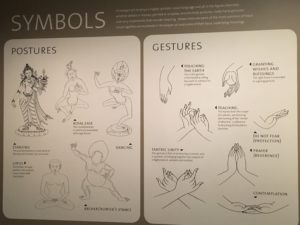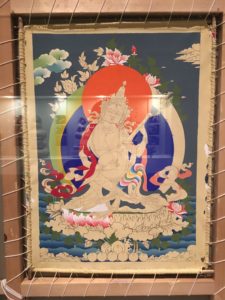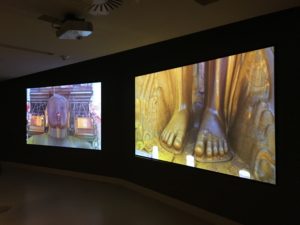By SHIRIN MAZDEYASNA, 5/13/2016. At The Rubin Museum, I visited the Gateway to Himalayan Art a couple of weeks ago. The exhibition was curated by Karl Debreczeny and Elena Pakhoutova and offered a broad perspective on the greater Himalayan cultural sphere and specifically the Art of Himalayan Mountain through introducing different materials and methods for producing their sacred art, as well as the signification of figures and symbols in context.
The figures have been categorized mainly into four groups: Buddhas, Bodhisattva, Deities, and Humans.
Buddha refers to Shakyamuni, but can be ascribe to those who are awakened and enlightened: have arrived at a complete comprehension of the true nature of reality.
Bodhisattvas are represented by a symbol of wisdom and are those who attain enlightenment and help others in arriving to the truth.
The explored Deities at the exhibition include Hindu and Tantric Deities. The creator of the Hindu and Buddhist Deities were at a lot of times one, and they used the same artistic techniques for both and for very this reason, some similarities are visible. Tantric Deities are those who have multitude arms, legs, and heads, which symbolize their capacities of understanding the reality beyond the norm.
Humans are the representative figures of the monasteries and the practices of Buddhism and dharma, traditionally depicted as a group of sixteen Buddhist Monks.
The symbols and body gestures used in Himalayan Art are all signifying meanings and consist of different body postures and hand gestures. Even the Implements used in each imagery or for each figure offers a specific meaning and context. For example, Bodhisattva’s wisdom is usually represented by either a sword or a book.

Due to the nature of Himalaya, clay was used mostly to create the desired sculptures and 3D materials. Wood or metal mold and armatures were used in the process and the sizes ranges from very small to large clay statues.
For 2D arts, painting on different surfaces like paper or textile were typical and thangka, hanging scroll, is one of the most traditional ones. Thangkas were created with natural stones and each color was acquired from a specific natural source. The colors and background landscapes also signified symbolic conventions and were of importance. Other forms of 2D art included miniature paintings (illuminations), illustrations made with carved woodblocks, and woven or embroidered textiles.

There is an interesting correlation between the rituals and the sacred arts of different regions. Rituals often are depicted in the sacred arts of the region and informs us about the process of practitioners’ daily routines to communal activities and festivals. At the same time, the purpose of the sacred art is to be used and functioned in sacred rituals. What interests me the most is the importance and functions of religious rituals. When a religion came into being, there were no defined set of structures. However, rituals came as the live practice of the religion which helped one internalized its jewels. Could the religion survive without its main or arbitrary rituals? Or did the rituals at some points begin to interfere with the main goal of the religion?

